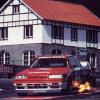Is the revs going down fast all the way to 900-1100 revs after letting off the gas a bad thing?
Announcements
-
Latest Posts
-
We will review wtf is going on, but if you made any donations let me know and i will follow it up with the admins
-
See, that button sounds like perfection Duncan! My eyes really don't like light shining at them from a dash when I'm driving. Being part red colourblind, I've found for most cars that I can change colours on, I set everything to red, so my eyes see the elast amount of colour! I miss normal gauges in cars
-
bro, knowing the Japanese in the 90's, i wouldn't be surprised if they shared components across their model lineup.
-
Maaaan so many "little" things i rly hope my old RB20 would be "ok" and not too bad. I try to learn what and what not do i need. I look at crossmember at it looks different...even parts numbers are different. Wiring and all that i rly do not know...yeah someone mentioned the speedo thing. On that yoke clip. I rly do not know what can and cant be done "custom" so that is why iam asking to know and not be suprised 🙂 I know what it looks like
-
Oh, there's also the gearbox crossmember which will probably be different between the small box and the big box, and the wiring loom will probably need to be modified, because the plugs for the switches etc, will probably be different. And I think the speedo on the small box R34s is from somwhere stupid, like the diff, possibly, so you'd need to work out what needs to be done about that (assuming it is different). I think the thing you need to realise is that the front end of that yoke is a large hollow tube with splines on the inside that mates with the splines on the box's output shaft. It is a dedicated thing - not available "aftermarket". They were made to suit that box, by the car's OEM.
-




Recommended Posts
Create an account or sign in to comment
You need to be a member in order to leave a comment
Create an account
Sign up for a new account in our community. It's easy!
Register a new accountSign in
Already have an account? Sign in here.
Sign In Now